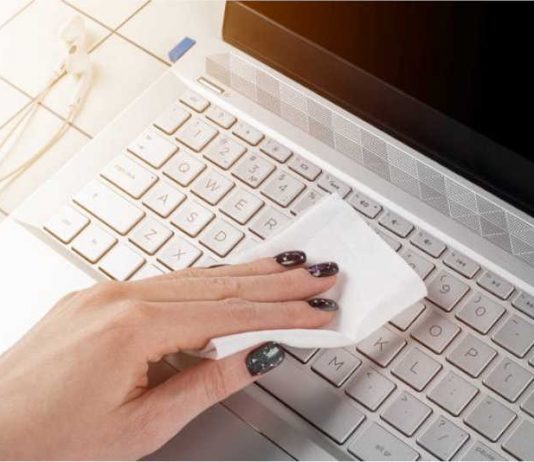When most people think about water damage to a laptop, your first assumption is spilling water on it. It’s common for laptop users to drop a beverage on their machines. However, there is another likely scenario. You may be in rainy weather, leaving your laptop unshielded from the drizzle. While a few drops of rain may not seem like much, they still pose a significant risk.
Although you wouldn’t know based on its appearance alone, rainwater has high acidic levels. It is more acidic than pure water from taps or stores. Of course, rainwater is less severe than sugar-based or alcoholic fluids, which are known to be conductive and corrosive. Nonetheless, rain can still cause significant damage, so don’t underestimate its harmful effects on your electronics.
A laptop shouldn’t be used or left in the rain. Moisture may get inside the device, ruining the motherboard and internal components. When your laptop gets wet due to the weather, it’s essential to act fast. Every minute matters because water damage can happen quickly. A delayed response in treating your wet laptop may result in permanent failure.
Hope isn’t lost if your laptop gets a little rain on it. Here is what to do when a laptop becomes wet from the rain.
Turn off your laptop
Power down your laptop. Keep it turned off. If the device is running from a power outlet, unplug it. When the laptop gets turned on, there’s a risk of short-circuiting. You don’t want to incur moisture, humidity, or water damage.
Remove the laptop battery
Take out the laptop battery. You don’t want liquid reaching the battery unit, causing an electrical hazard. However, only remove the battery after turning off the laptop and unplugging it from the power outlets. Wait until you finish removing all electrical connections from the device. Additionally, remove all other detachable components, like USB drives, flash drives, and memory cards. Leave your laptop bare.
Use a lint-free towel to soak up moisture
If your laptop gets wet in the rain, use a towel to wipe its exterior surfaces and absorb the excess rainwater. The most effective material is a lint-free towel, which soaks moisture competently. A quick, thorough wipe removes water from your laptop’s components and helps with drying.
Turn your laptop upside down
Many people recommend turning your laptop upside down, but it’s a step you should proceed with caution. On some designs, doing so can stress your device’s screen hinges. If you are confident, open the laptop and turn it upside in a V-like formation. That will stop the water from settling down and going further into the machine.
Never use a hairdryer on a laptop
It’s best not to use a hairdryer to dry a wet laptop. A hairdryer may push around moisture. Depending on where the water lands, it can also stain and corrode certain parts. Any hairdryer or direct heat can also cause static problems. That increases the risk of permanent damage to your laptop.
Let your laptop dry for 48 hours
Store your laptop in a cool, dry place for 48 hours before using it again. Let the air reach as much of the laptop as possible. Doing so should eliminate the rain moisture in your laptop.
After an extended wait, it may be safe to turn on your laptop again. Try the touchpad and the keys. Also, try the Internet connection to see how the browser functions. If everything works like it should, congratulations! Otherwise, you may want to seek help from a laptop repair technician.
Get a new laptop
If your laptop doesn’t work after trying the above solutions, it may be in dire condition. You may want to make one last-ditch effort and visit a technician for help. The professional can tell you whether it’s worth troubleshooting. If not, they may recommend that you buy a new laptop.
Although the weather is unpredictable, some laptops are designed to withstand the elements. The ASUS Zenbook Pro 14 Duo OLED is a durable powerhouse that has undergone rigorous testing to meet MIL-STD 810H military standards. These tests include operation in extreme humidity and temperatures. The rugged laptop exterior gives users peace of mind knowing their device can endure the occasional rain shower or high humidity. It’s an optimal device for those who work in challenging climates.
Back up your data immediately
If you can get your laptop working, now is the time to back up all the critical information on the hard drive. You can do so either with a USB key or an external hard drive. Save all the necessary photos, videos, documents, and anything else you don’t want to lose.
A wet laptop is unpredictable. It may work erratically, so don’t take any chances. Back up all your files and folders that are important to you. Even if the damaged device doesn’t work again, you can transfer the information to your new laptop.
